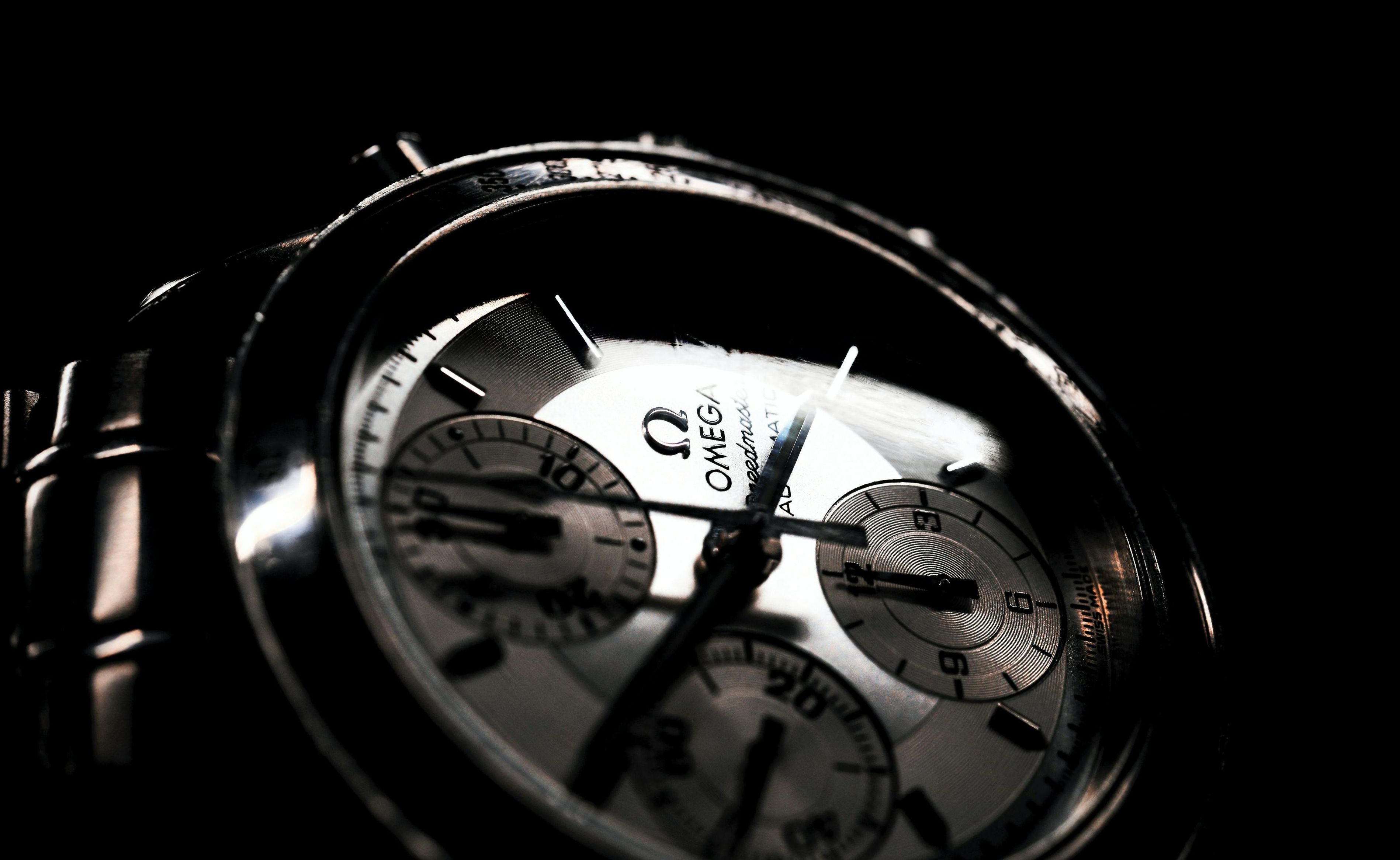And to find out Don's opinion on 50 watch brands, click here .
In the highest heavens? The question of prices and margins
The question of margin is a very big taboo in watchmaking. You will have more chance of discovering the color of the Queen of England's underwear than knowing the margin rates practiced by your favorite brands. To take a highly symbolic example: even Rolex's turnover is not communicated (at most you will see estimates provided by third parties, with a completely random precision) so as for the margins practiced... When their status allows it - this is the case of Rolex whose owner is a foundation - the brands avoid these questions. When the groups are listed on the stock exchange, they consolidate their results which makes it difficult to estimate sales and margins for each of the brands.

At 1 billion, the word estimate takes on its full meaning… (Source: Le Temps)
If we take the cases of the Swatch Group or Richemont, the overall operating margin (indicator of sales profitability) is between 15% and more than 20% outside of times of crisis. Obviously, this type of figure must be taken with caution because it does not mean that on each model, profitability is of this order.
For example, during the 2016 watch crisis (which partly lasted until 2017), the stock of unsold items was very high, which resulted in Richemont buying back the stocks held by its distributors. This is an operation that it repeated very recently in 2018. This type of operation ruins profitability but it was apparently deemed necessary by the group to be able to sell its new models to its distributors.
Regarding prices, generally, if this question is raised with a view to negotiation in the context of a purchase, the brands or distributors will respond more or less kindly with this old pirouette:

Certainly, gentlemen... But it remains a product and behind the product there are distributors, brands, an industry, an economic sector, companies and groups which need to generate a certain profitability.
In the watch industry, the profitability of groups is in double digits . If you know the profitability generated by LVMH (*current operating profit: 19.5% in 2017), the world leader in luxury, you will have a vague idea of the profitability generated in the watch sector.
The watch industry has massively adopted luxury codes and, therefore, luxury prices and luxury margins . Across all sectors, in the vast majority of companies, the selling price of a watch is completely uncorrelated with its cost price (sum of all costs to produce a good). This is reflected in the automatic price revaluation policy established by brands.
Every year, the price list is re-evaluated (in 99.99% of cases, it is not downward). This is how we can see that prices have literally exploded. Just compare some watch prices that have tripled, quadrupled or even quintupled.
An example: the price of a classic Rolex Daytona has increased by more than 350% in the space of 30 years . The classic Submariner has increased by more than 480% during the same period!

The famous Rolex Submariner, with its variations of bezels and bracelets in different colors and materials.
What was accessible (this does not mean cheap) has become prohibitive in some cases. At the same time, wages have not quadrupled during the same period. Nor has the price of steel. The reason lies in the adoption of luxury prices.
Some brands were not even historically positioned in this field: in the 60s, Omega was not in the luxury segment (this did not prevent it from being a brand with very well finished, beautiful, reliable and innovative models). It became a luxury brand following the choice to position itself in this segment, synonymous with great profitability.

The Speedmaster Moonwatch Apollo 8, made by Omega in homage to the mission of the same name, 50 years later. Presented at Baselworld, it will be marketed in September 2018.
Concerning the distributors' margin, it is variable . Outside of special commercial operations (during a liquidation of a store's stock), watches can be sold for approximately twice the wholesale price defined by the brands. As Benoît recalled in his article for ready-to-wear, it is important to understand first that 20% of this price is intended for VAT.
The distributor's margin is – and again, this is variable – around 30%. This is not a scandalous figure, it must be understood that not all watches in stock at distributors are sold and that the contracts that bind the distributor to a brand require taking models that will be sold easily while others will remain in the boxes...
We must not forget the cost of security : since certain brands can be coveted, just like jewelry, the costs of security are not the same as those for protecting against theft of ties, even cashmere ones.
Does this mean that you have room for negotiation to acquire a watch from a distributor? It depends on the brands and models. To take the case of Rolex, it is very rare in France to benefit from discounts on this brand.

Small discount or no discount at all, the Rolex Milgauss Z-Blue remains in my opinion one of the most beautiful watches from the brand with the crown.
There are some latitudes in other countries but the brand and the distributors avoid or are reluctant to grant large discounts. Other brands and their distributors are less pinching their noses and can grant a more or less large margin of negotiation, depending on the periods, the models and the flexibility of the distributor.
To push through the price increase policy, the brands relied on a market that was booming in the 90s and 2000s (and until 2014-2015) but also on a whole marketing system.
Marketing that was effective for a long time is now aging
Watch brands and groups have deployed a marketing strategy obviously aimed at anchoring in the minds of consumers that: Swiss mechanical watches = luxury.
The watchmaking sector is not the only one to have adopted the codes of luxury: a significant part of the ready-to-wear sector has adopted this positioning.
Without going into the details of the entire arsenal at the brands' disposal to anchor in people's minds that their watches are luxury items that justify a substantial price, it should be noted that brand communication has aged considerably and for a very simple reason: the Internet has revolutionized the way in which individuals access and compare information .
While brands have often added an Instagram page to post pretty, retouched photos, and for years now have been using bloggers financed by advertising to distribute necessarily positive content, they seem to have missed the train of the Internet revolution.
An increasingly expert buyer
Forums have in particular enabled, provided that they have an independent editorial line, exchanges between enthusiasts and those who wish to learn about watchmaking. Overall, knowledge of watchmaking is gradually increasing.
This is evident in the exchanges between buyers and sellers, with the latter gradually being confronted with interlocutors discussing technical subjects and/or having a good historical knowledge of the brands.

The ETA 2824-2 movement, heads and tails
If someone wants information on the reliability of a watch equipped with a Sellita SW-200 movement compared to the original ETA 2824-2 movement, a little research will allow them to appreciate the various comments and feedback; not to mention the contributions of some experts and insiders in the sector.
If a customer wants to buy a Jaeger-Lecoultre for X thousand euros, it is normal that he wants to find out whether the brand that was previously called "the great house" is still synonymous with reliability and luxury... or not. Are the indexes correctly fixed on the dial? Is the brand's after-sales service worthy of its great history? How much does it cost to service their in-house movement? Etc.

The iconic Jaeger-Lecoultre Reverso, born in the early 1930s, sold from 6,150 euros to more than 100,000 euros...
Despite the articles in the so-called professional press, which practically copy and paste the press releases of the brands, one can find information on the Internet which goes beyond the simple comparison of the different prices charged.
The real problem for all brands and groups is that demand is changing structurally . Excessive marketing – and more precisely, excess of a type of marketing very much associated with the 90s and 2000s – no longer allows problems to be hidden (after-sales service, returns, declining quality of certain old brands) and at the same time justify price increases. To continue to maintain high prices, you really have to be high-end and the product and associated services must be impeccable. And some brands have succeeded perfectly on this point. Take Rolex and its Tudor brand for example.
And besides, this luxury-based marketing is confronted with another reality maintained – and hidden – by the brands themselves: the existence of a grey market.
The dark underbelly of the gray market
In men's fashion, you have sales, which are always the subject of great attention to (try to) make good deals while treating yourself. In the watch sector, sales are much more unofficial. In reality, to reduce their stocks, some brands and distributors go through the gray market.
What the hell is this famous grey market? The grey market is not an illegal market . It is an unofficial market, which does not benefit from any advertising from the brands, that goes without saying. When the stocks of the brands become too large, there are other possibilities to sell the stocks.

The decision has been made: it's time to sell off your stocks on the gray market!
If you know Vente-privée.com, you will see from time to time some watch brands that place their products there. You will not see Vacheron Constantin or Omega on this site but, from time to time, you will see some watches there and you will then notice the discount practiced. This will give you a little idea. Like Baume et Mercier a few years ago or Glycine recently.
This is just the tip of the grey market iceberg . There are other possibilities, such as resorting to private sales reserved for employees of watch brands or groups. At the worst moment of the watchmaking crisis in 2016, a historic and prestigious brand (whose name I will not mention), the embodiment of fine watchmaking, held private sales reserved for its employees with an 80% discount on their watches, even the "iconic" models, the opportunity to acquire a prestigious watch in platinum or white gold for 8,000 euros instead of the official public price of 40,000 euros.
Even at 8,000 euros, it was whispered internally that the brand was not losing money, at most its margin was reduced. These private sales are in theory used to allow the company's employees to benefit from preferential rates.

Vente-privée.com occasionally allows you to get a few good deals, but you have to sort through the brands on offer.
In practice, this contributed through the employees of this group to supplying the grey market, a common practice to reduce stocks, with employees themselves reselling these watches to friends or acquaintances.
Finally, there are specialist distributors, perfectly legal, who resell second-hand and strangely immaculate watches with a discount of 30-40% depending on the model (the price often corresponds to the value of the watch when it is sold between individuals in almost new condition).
The grey market is another major taboo in the watchmaking sector because the brands themselves feed it, as do certain distributors in order to reduce their stock, which has become particularly substantial due to production capacities that are higher than the market's development.
They will not talk about it, so as not to contradict the message conveyed by their communications department, to avoid polluting relations with their official distributors and to avoid explaining to their shareholders that their luxury watches are suffering from a large discount (this is not very good when presenting the annual accounts).
Obviously, not all brands are created equal, they do not all have the same policy regarding the management of unsold stock. In the same way, there is another aspect that is generally relatively little discussed in public: the quality of after-sales service, an aspect that is nevertheless fundamental.
After-sales service hello! (and goodbye…)
Indeed, when you pay the price to buy a new item, you do not want to find any hidden defects. In addition, if you follow the approach advocated by BonneGueule, you will gradually move towards quality and durable products rather than buying products that appear cheaper (or conversely much too expensive in relation to the real quality) but which wear out more quickly and ultimately lead you to spend more...
In the same way, instead of buying a branded watch that is more of a fast fashion type (I am thinking in particular of Nixon or Diesel watches which illustrate almost everything that I dislike), it is necessary to take a little more time before choosing your future timepiece.

Seeing such things wounds my heart with a monotonous languor.
However, it is not just about opposing good and bad brands, mechanical and quartz watches. In watchmaking, you should know that the high price of a product does not absolutely guarantee that it will be without reproach. Long before being considered by some as a jewel, a watch remains a mechanical product. Obviously, there can be defects and errors in quality control. An accident or improper handling also causes problems with a watch. Examples: violent shock or error when setting the date in the "death zone"
Anecdote : An independent watchmaker I interviewed told me about the time he had blown up a Patek 5000 while uprooting a quince tree. He had slipped, he had the watch under a glove but he had hit some stone borders… Yes, it hurts and the watch - estimated at several thousand euros - did not survive. Ouch.
In any case, it is better to benefit from excellent after-sales service. Problem: this aspect is often neglected by the buyer. When you enter a beautiful boutique, when you are surrounded by beautiful brands, some of which are several centuries old and enjoy great exposure in fashion magazines or in special editions of major general magazines, then it seems obvious that they have an after-sales service that is up to par.
The truth is simpler: after-sales service is a cost for watchmakers . The development of their sales leads, sooner or later, to an increase in returns to after-sales service, more or less depending on the brand, it is true. And sooner or later, you will need good service. Because if you buy a watch that you want to pass on or keep, you will have to go through the revision box of your movement (3-5-10-15 years… it depends on the movement and the use of the watch).

There is a very important underlying trend: brand after-sales service is becoming captive . With the development of in-house movements (remember what was mentioned in the first part: ETA is gradually no longer supplying its movements to third-party brands, nor spare parts to independent watchmakers even though they are needed to repair them), independent watchmakers can no longer repair new watches equipped with these exclusive calibers.
For the new calibres such as Omega's Master Co-Axial or the manufacture calibres of IWC or JLC... independent watchmakers have neither the spare parts nor the machines needed to repair them. And there, the painful note may well arrive at the time of the revision.
Finally, be sure of one thing, problems often occur well after the warranty has expired (usually it is two years, some companies like Omega and Rolex push it to four and five years respectively).
- My advice : always ask about after-sales service: the price and timeframe for a service from the brand . You have community platforms through which customers can discuss their disappointments but also the good quality of certain after-sales services.
Of course, you might think that all this is a lot of effort and expense. Then ask yourself the question: do you think it is normal that your car and your home need maintenance and work? When you buy a mechanical watch, there is not only an idea of immediate consumption or planned obsolescence as is the case for smartwatches or smartphones (paying so much for planned obsolescence leaves me very perplexed). There is the underlying idea of a transmission, of something that can stand the test of time.
Living and growing old with a timepiece is not just a fashion but a lifestyle. It does not stop time but it gives it to you and that is perhaps already a lot.
I could write for hours and hours about the watch industry, Swiss Made, models that are considered good options based on feedback... but I can already see Benoît coming with a glass in his hand and a watch on his wrist. So, let's adjust our pocket squares and ties and go have a drink... until next time.

- Have you seen the time? It's time for a Ricard.
- But… it’s 10am Benoît!!
Thanks to Benoît for his interest in watches, to the BonneGueule and FAM teams, and in particular Zen, whose knowledge and passion for the history of beautiful watches have always fueled our discussions.






